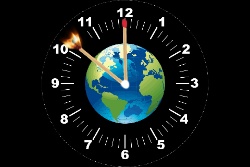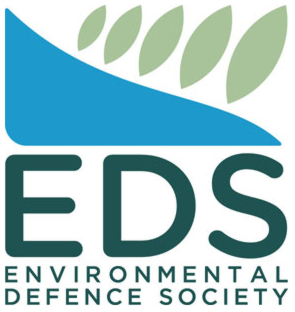From Kiwi Start-Up To Aussie Scale-up: How New Zealand Tech Firms Can Navigate Office Expansion Into Australia

Wellington, NZ – With New Zealand’s tech sector continuing its impressive growth, more Kiwi start-ups and scale-ups are casting their gaze across the Tasman. Australia offers a lucrative, scalable market, enhanced investor appetite, and proximity that makes it a natural progression for many businesses. But while crossing the ditch may sound straightforward, navigating office setup, local compliance, and workspace design in Australia presents a unique set of challenges—and opportunities.
For technology firms, particularly those embracing hybrid work, agile development teams, or rapid scaling, having a tailored and ergonomic physical office remains a cornerstone of operational efficiency. Whether it's setting up a satellite team in Sydney or moving headquarters to Melbourne, workspace planning in Australia deserves the same precision as your product development roadmap.
Why Australia Is a Strategic Step for NZ Tech Firms
Australia's tech landscape is buoyant, with strong governmental support, R&D incentives, and a growing ecosystem for SaaS, AI, and fintech ventures. Cities like Sydney, Melbourne, and Brisbane boast access to global talent, robust infrastructure, and a deepening pool of VC funds. For Kiwi companies looking to tap into new markets without significant timezone barriers, Australia is the obvious choice.
Yet, local competition is fierce, and first impressions count—especially when courting enterprise clients or top-tier engineers. This is where office presentation and layout can influence more than just aesthetics; it can affect recruitment, client trust, and even productivity.
How Workspace Design Influences Growth Trajectory
In tech environments, your office is more than a location—it’s a growth engine. A thoughtfully designed space can:
- Enhance focus for engineers and developers
- Support agile sprints and cross-functional collaboration
- Reflect your brand’s innovation culture
- Integrate seamlessly with remote and hybrid work models
- Ensure compliance with Australian workplace health and safety regulations
Unlike traditional fitouts, modern tech workspaces are dynamic. They require zones for deep work, virtual meetings, hardware testing, and collaborative sessions—all underpinned by ergonomic furniture and smart design.
Common Pitfalls When Setting Up Offices in Australia
While New Zealand and Australia share cultural and business parallels, many Kiwi founders underestimate regulatory, spatial, and functional differences when expanding. These include:
- Fit-Out Compliance: Australian building codes differ in areas like accessibility, fire safety, and mechanical ventilation. Ignoring these can delay approvals and increase costs.
- Underestimating Fitout Timelines: High-demand cities like Melbourne often require 8–12 weeks for quality commercial fitouts, excluding design and council approvals.
- Ergonomic Oversight: Tech teams working long hours need purpose-built furniture and layouts to avoid burnout and repetitive strain injuries.
As such, businesses expanding from NZ to Australia must think beyond desks and walls. The office must function as a strategic extension of your team and product culture.
Workspace Tech Trends in Aussie Fitouts
In 2025, commercial office fitouts in Australia have evolved rapidly to accommodate the hybrid and digital-first workforce. Key tech and ergonomic trends include:
- IoT-enabled hot-desking with desk-booking apps and occupancy sensors
- Ergonomic sit-stand desks integrated with workflow timers and posture reminders
- Acoustic booths for Zoom calls and virtual demos
- Modular tech zones for testing devices or showcasing prototypes
- Climate-smart HVAC systems for air quality and energy savings
These are not perks—they are competitive necessities for fast-moving tech teams.
Office Fitouts with Regulatory Peace of Mind
If you’re expanding your tech firm into Australia, office fitouts in Melbourne, Sydney, and Brisbane require local expertise. Spatial layouts must comply with the National Construction Code (NCC), and furniture must meet Australian ergonomic standards (e.g., AS/NZS 4443:1997 for office chairs).
Moreover, designing for accessibility under AS 1428 is mandatory. Many NZ firms are surprised by the granularity of Australian regulations—but partnering with a team that understands these codes can eliminate delays and unlock smoother approvals.
Offer: Free 3D Office Layout Rendering & Regulatory Consultation
To support Kiwi tech businesses setting up in Australia, we offer complimentary 3D renderings of your proposed workspace. Send us your floorplan and a list of needs (headcount, collaboration zones, tech requirements), and we’ll return a tailored workspace layout—compliant with Australian regulations and optimised for your business goals.
Our team also provides advice on acoustic requirements, furniture selection, and zoning laws, ensuring you avoid common pitfalls. Whether it’s retrofitting an existing suite in Sydney or a full-scale custom workspace fitout in Melbourne, our process is lean, transparent, and grounded in tech-first thinking.
Why Local Experience Matters
Having helped dozens of digital and hardware businesses transition from New Zealand into Australia, our team knows how to bridge the operational, legal, and cultural gaps. We work closely with building managers, architects, and local councils to ensure your fitout meets both compliance standards and cultural expectations.
We’ve seen time and again how a well-executed workspace speeds up onboarding, boosts productivity, and leaves lasting impressions on clients. In markets like fintech or SaaS, these differences can influence investor confidence and deal velocity.
Case Study: A NZ SaaS Firm Scales into Melbourne
One Auckland-based SaaS provider, having closed a Series A round, set its sights on Melbourne. Their goals were clear: hire 12 engineers, impress enterprise clients, and maintain their NZ brand ethos.
Within two months, their leased space was redesigned. Sit-stand desks replaced static benches. A biophilic break zone was introduced. Meeting rooms were acoustically treated, and a tech zone was created for real-time product demos. The result? Increased collaboration, reduced churn, and a favourable audit from a major investor.
What to Include in Your Aussie Fit-Out Brief
When working with a fit-out partner, your brief should include:
- Team size and projected growth over 12–24 months
- Technical zones required (servers, whiteboarding, prototyping)
- Preferred workstyles (agile, hybrid, remote-flex)
- Inclusion of wellness zones, green design, or quiet spaces
- Branding integration (logos, colour palette, digital displays)
This isn’t just a logistics process—it’s a branding and leadership decision. Let your workspace speak your values before you even pitch a proposal.
Final Word: Build Smart from the Start
For New Zealand tech leaders making the leap to Australia, the physical office remains a critical asset. But it must be done right. It’s not just about buying desks or renting floors—it’s about creating a high-functioning environment where your team thrives and your company scales with confidence.
By investing in smart, ergonomic, and compliant fitouts from day one, you reduce risk, improve retention, and signal to the market that you’re not just expanding—you’re here to lead.
Want to get started?
Send us your floorplan and we’ll return a tailored 3D layout along with compliance tips—free of charge. Let your next chapter begin with a workspace that reflects your ambition.


 Environmental Protection Authority: EPA Approves New Fruit Fungicide
Environmental Protection Authority: EPA Approves New Fruit Fungicide Science Media Centre: Landmark Climate Change Case This Week – Expert Reaction
Science Media Centre: Landmark Climate Change Case This Week – Expert Reaction Stats NZ: Total Greenhouse Gas Emissions Rise 0.9 Percent In The March 2025 Quarter
Stats NZ: Total Greenhouse Gas Emissions Rise 0.9 Percent In The March 2025 Quarter Commerce Commission: ComCom Finds No Evidence Of Cartel Behaviour In Banks’ Involvement In Net-Zero Banking Alliance
Commerce Commission: ComCom Finds No Evidence Of Cartel Behaviour In Banks’ Involvement In Net-Zero Banking Alliance Hāpai te Hauora: Pātea - A World-First Māori Gambling Harm Digital Platform Launches Across Aotearoa
Hāpai te Hauora: Pātea - A World-First Māori Gambling Harm Digital Platform Launches Across Aotearoa Āti Awa Toa Hauora Iwi Māori Partnership Board: New Whaitua Mapping Tool And Monitoring Our Oranga Framework Places Health Information In Whānau Hands
Āti Awa Toa Hauora Iwi Māori Partnership Board: New Whaitua Mapping Tool And Monitoring Our Oranga Framework Places Health Information In Whānau Hands


